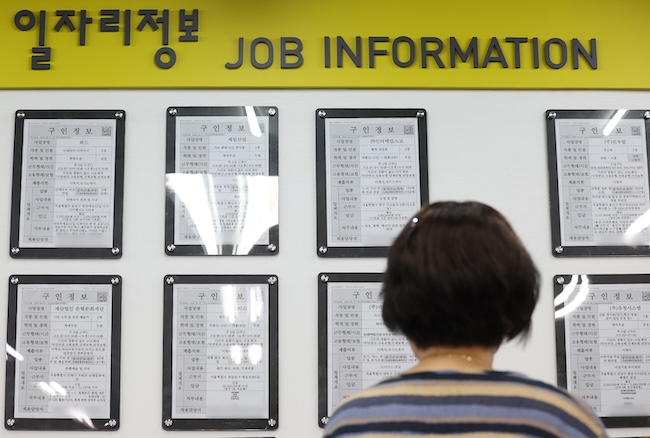
The current state of the labor market in South Korea is more challenging than prior to the pandemic. (Image courtesy of Yonhap)
SEOUL, Dec. 27 (Korea Bizwire) – The current state of the labor market in South Korea is more challenging than prior to the pandemic, with the workforce aging rapidly and showing reduced enthusiasm for strenuous manufacturing roles, as per a recent survey.
To address this, recommendations include recruiting more international students and middle-skilled foreign workers possessing strong communication skills. Additionally, experts have noted the importance of bolstering automation policies in simple manufacturing to mitigate the spread of labor shortages.
According to the December 26 report on the “Assessment of Local Labor Market Supply and Demand Situation” by the Bank of Korea (BOK), the labor shortage in South Korea has worsened since the onset of the COVID-19 outbreak.
The BOK utilized the job openings-to-supply ratio from Korea Employment Information Service statistics to evaluate the labor market imbalance. A higher index indicates more pronounced labor shortages relative to company needs. In comparison to the third quarter of 2019, 15 out of 16 metropolitan local governments in Korea (excluding Gwangju) experienced labor shortages.
Across all occupations during this period, job openings increased by 36.6%, while job applications only rose by 14.7%. The manufacturing sector faced a more severe scenario, witnessing a 45.5% surge in job openings for factory floor positions since the pandemic, coupled with a 2.1% decline in job openings, exacerbating the supply-demand imbalance.
The decline in the number of individuals in their 40s is contributing to the labor shortage. Statistics Korea reveals that the number of people in their 40s, considered the economic “waistline” of Korea, dropped to 7.89 million last month, reflecting a year-on-year decrease of 139,000—the most significant drop in more than four years.
The aging population is intensifying the scarcity of elderly care workers, with the job growth rate for new care services in the last four years (133.9%) outpacing the growth rate for all occupations (36.6%).
A survey conducted by the BOK among 570 companies nationwide on the same day indicated that 15.3% of respondents reported being “short of labor this year,” up from 12% in 2019. More than 2 in 10 (22.2%) of the respondents stated that job competition had decreased over the past four years.
Labor shortages were reported prominently in production, field, and skilled trades occupations, small and medium-sized businesses by company size, and manufacturing, including shipbuilding, as well as in the hospitality industry.
M. H. Lee (mhlee@koreabizwire.com)






